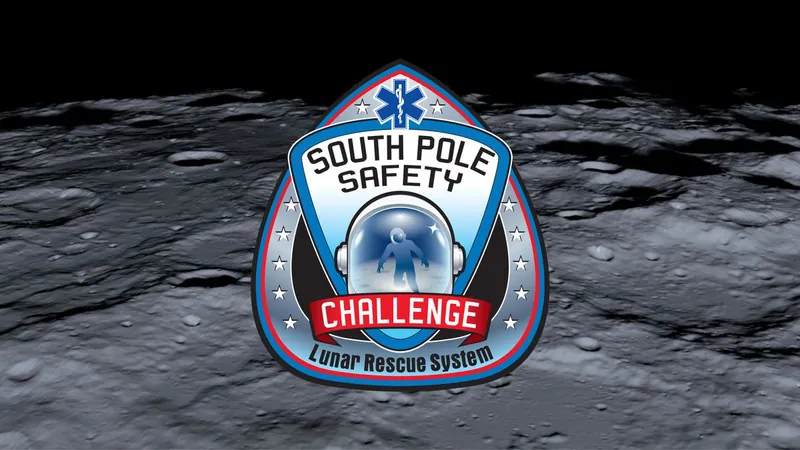
Are Astronauts Prepared for Emergencies on the Moon? NASA Seeks Solutions!
2024-11-21
Author: Wai
NASA's Initiative for Lunar Safety
In a bold move to ensure the safety of astronauts during future lunar missions, NASA is actively seeking innovative ideas to create emergency response plans tailored for the unique challenges of the moon's surface. This initiative, known as the South Pole Safety Challenge, calls on participants to devise compact and efficient systems that astronauts can utilize during extravehicular activities (EVAs) in emergencies.
The Urgent Need for Rescue Mechanisms
NASA has emphasized the critical need for an effective rescue mechanism in scenarios where a crew member may become incapacitated while exploring the lunar terrain. "The ability to return them safely and promptly to the human landing system is essential," officials stated, highlighting the urgency of developing reliable solutions as part of the Artemis program.
Artemis 3 Mission Overview
The Artemis 3 mission, poised to be the first crewed landing on the moon under this program, is anticipated to launch no earlier than September 2026. Set to take place near the moon's south pole, this mission will involve two astronauts conducting EVAs amid the region’s challenging environment, which includes large rocks, craters, and extreme temperatures, all exacerbated by the moon's low gravity.
Design Challenge for Innovators
Participants in NASA's challenge are tasked with creating a design that enables a single astronaut to transport another fully incapacitated, suited astronaut weighing as much as 755 pounds (343 kg) back to safety, distance ranging up to 1.24 miles (2 kilometers) and across slopes of up to 20 degrees—without the use of a lunar rover. This design must also be lightweight, easily deployable by one individual, and suitable for the extreme conditions of the lunar south pole, as detailed on the crowdsourcing platform HeroX.com.
Call to Action for Engineers and Innovators
NASA encourages innovators and engineers to contribute their creativity and expertise to close this critical safety gap, embodying the spirit of exploration that has defined human space travel. This is not just about safeguarding astronauts; it's an essential step in paving the way for humanity's next monumental leap in exploration.
Conclusion: Preparing for the Unknown
As we stand on the brink of a new era in space exploration, the question remains: Are we truly ready for the unforeseen challenges that await us on the lunar surface? Join the conversation about how we can ensure that our brave space pioneers are well-prepared for every scenario imaginable. Stay tuned as NASA continues to unveil further details about upcoming Artemis missions and the innovative technologies that will help protect our astronauts!



 Brasil (PT)
Brasil (PT)
 Canada (EN)
Canada (EN)
 Chile (ES)
Chile (ES)
 España (ES)
España (ES)
 France (FR)
France (FR)
 Hong Kong (EN)
Hong Kong (EN)
 Italia (IT)
Italia (IT)
 日本 (JA)
日本 (JA)
 Magyarország (HU)
Magyarország (HU)
 Norge (NO)
Norge (NO)
 Polska (PL)
Polska (PL)
 Schweiz (DE)
Schweiz (DE)
 Singapore (EN)
Singapore (EN)
 Sverige (SV)
Sverige (SV)
 Suomi (FI)
Suomi (FI)
 Türkiye (TR)
Türkiye (TR)